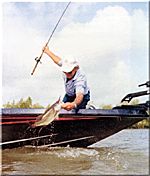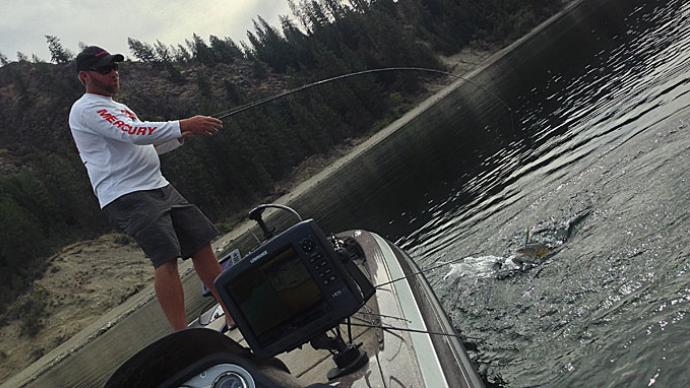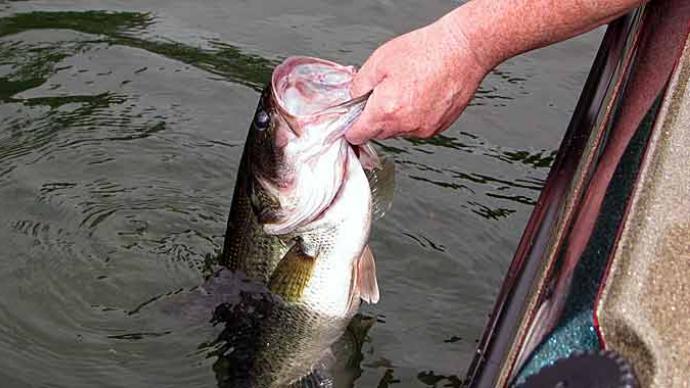
The sun is just showing in the east. It's Saturday morning, and you are standing on the launch ramp of a mega-lake. No matter how much you have fished, if it's your first time on this body of water, somewhere in your mind, a little doubt will lurk about your ability to catch fish on this new - BIG - water.
On my home lake of Texoma, which is 80,000 plus acres, I know where to go and what to throw at different times of the year. However, take me to Big Sam or Livingston, and I am almost lost. There is no substitute for experience. However, most of us can only live by one lake, and it's likely to be a puzzle when we go elsewhere. If it's your first time on a major lake, the easiest and best way to solve the lake puzzle is free, and it's fun or can be.
Try to get to the lake early enough the day before to make the rounds of bait and tackle shops. Before or after you get to the lake, study your map, not so much for structure as to find out where the boat ramps are located. Figure out how to get to the ramps beforehand. If the fish gods are mad and the wind blows, this will let you have a protected area to fish without running across open water. Big lakes can sometimes get scary with waves you have to be in to believe.
The neat thing about living in Texas is that most natives like to talk. By getting to a lake early and visiting with shop owners and customers, you can pick up tips on areas that hold fish and baits that work. This can be a big help, especially if it's your first time on the lake. Take a map with you and ask for some ideas on the best parts of the lake to try. Target the older patrons since they have been around the longest and are more willing to talk about places and baits than some of the younger anglers who fish local tournaments for prize money.
The second way to get a handle on the lake, if you can afford it, is to hire a guide. A day spent with one guide will maximize your time on the water. Even if you brought a boat, a half-or full-day trip split between two partners will almost pay for itself in gas money and, more importantly, in time saved. I am a guide, but I will hire a local guide if I make a long trip to a strange lake. I'll do so for at least half a day. If you hire a guide, rather than spend all your time fishing, tell him you would like to see some of the lake and catch some fish. Ask him to take you there if you have an area in mind from your map study. It's your money, and the guide should accommodate you if asked. If you are in doubt or aren't sure about a guide's ability, ask for references.
Generally, we will be there for at least two days when we go to a far-off lake. Using a guide for part of day one, the second day, you can go out in your boat and grasp fish locations and baits. The most challenging way to figure out a lake is to get a map. Even with diligent study, once on the water, the top looks alike. It doesn't take much for you to miss a spot. With enough time and gas, you may be able to find it, but most of us had rather be fishing than looking.
If you are determined to find fish on a major mega-sized lake, the easiest and most productive spot to start will be in the marinas. Most local bass clubs release their fish in these areas after a tournament. The fact that you have cables, floating structure, shade, and brush piles put out in and around the slips by local crappie and bass fishermen make them a better-than-average place to start. Because shad are plankton feeders, they will use marinas heavily because of the moss and growth on the floats and boats. On any lake, regardless of size, find the bait, and fish will be nearby.
Another way to bring a mega-lake down to size is like eating an elephant - take it one bite at a time. During a Texoma tournament, BASS Pro Basil Bacon once said that even though Texoma is 80,000 surface acres, it fished like a 20,000-acre lake. This is because Texoma had so much open water owned by the big stripers, which was not productive for largemouth. Apply this to any big lake.
First, rule out most of the open deep water on a lake map, especially on older lakes. Silt will have altered the contours and bottom structure over time. Then look at what's left. Your next step will be to pick out and spend time in a specific part of the lake and spend time in it. Generally, an arm, or cove, with a major creek entering it will be more productive than just a large bay.
Think about the upper ends of the lake. During floods, big trees wash down and hang up on ridges and turns or the bottom in shallow water. Here is a sure location to find fishable structure on strange major lakes. Because most of our mega-lakes are river fed, they will have more logs and trees washed down than smaller creek-fed lakes.
When you feel like you understand the water, try to catch a fish. Every lake has some local lure color or bait that is more productive than others when used on it. If you feel like a new lure will help catch fish on a lake, by all means, buy one. Just remember, tackle dealers are there to sell lures, so use common sense when buying. No matter what locals may say, if you don't believe a bait will work, you will not fish it to its full potential. Confidence is a major player in solving the puzzle of any lake of any size. If you have confidence in a certain lure, you will keep it in the water instead of on the deck.
In 30-plus years of fishing, I only had two bass jump in the boat while changing baits. I caught the rest when my lure was in the water. A big lake is like a puzzle, but instead of putting it together, just take it apart a section at a time.




